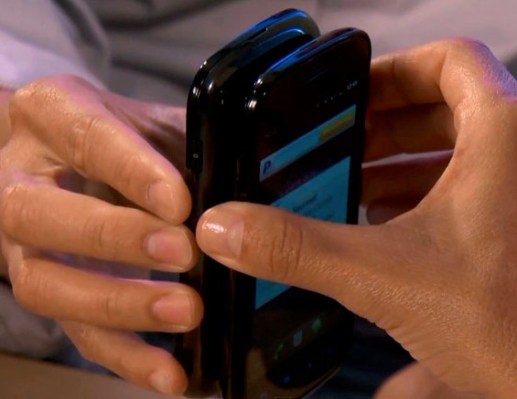Mobile users with NFC-enabled devices will no longer need a special application in order to exchange contact details or other types of data between their phones thanks to a new NFC specification which has just been released.
The non-profit industry association The NFC Forum has published its 16th specification today, this latest being a standardization of the Simple NDEF Exchange Protocol (SNEP) to use peer-to-peer mode for data exchanges. For users, this means less compatibility problems between devices, and for mobile app builders, it means simplified development.
Without getting overly technical (the full spec is available here, if interested), the new specification extends the NFC data exchange format (NDEF), which previously described how data, like a website URL for instance, would be moved from an NFC tag to a NFC-enabled phone by tapping or waving a mobile device within close proximity to the tag.
NFC, or “near field communication,” refers to the wireless technology that allows data exchange over short distances. It’s the backbone to the many upcoming mobile wallet systems, like Google Wallet, Visa’s wallet or the carrier-led initiative Isis, which just announced partnerships with all major Android device manufacturers.
With the new specification, devices from different manufacturers would be interoperable when it came to exchanging data. That means, for example, assuming the iPhone 5 includes NFC, you could tap your iPhone to an Android user’s phone to exchange contact info, pictures, URLs, or any sort of supported data. And you wouldn’t necessarily need a special app to do so, although apps like Bump at least provide an attractive front-end to the data exchanging experience. (Bump does not use NFC currently, but it could support it in the future, if the developers chose). Instead, the data-exchange via NFC option could be built into the OS, similar to how Bluetooth is made available today.
The NFC Forum suggests contact exchanges as one possibility for the new spec’s use, in addition to “collecting movie posters for later use.” That is, a mobile user could tap posters with NFC tags while walking by and later tap their NFC-enabled TV to watch the trailers they saved. (Yes, please!)
That said, support for NFC is still years out, according to most forecasts, and until Apple’s announcement next month, we don’t know if the iPhone 5 will include the technology. Still, there’s a lot of momentum in the space, and the reactionary nature of the Isis announcement seems to imply Apple’s forthcoming participation. Good news, then, that the new (fingers crossed!) NFC-enabled iPhones will now be able to work with my Nexus S.
